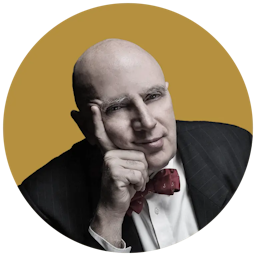Fred Hersch’s Leaves (& Roots) of Jazz
This article is from the archive of The New York Sun before the launch of its new website in 2022. The Sun has neither altered nor updated such articles but will seek to correct any errors, mis-categorizations or other problems introduced during transfer.

The first point is in favor of pianist Fred Hersch’s setting of Walt Whitman’s “Leaves Of Grass” – which he performed with his 10-member ensemble last Friday at Carnegie’s Zankel Hall and which has just been released on Palmetto (2107) – is that it is not “jazz-and-poetry” as we usually think of it.
Jazz-and-poetry combinations, which reached an early peak with Charles Mingus’s “Scenes in the City” and “The Clown,” are rarely successful. Rather than making dance or poetry more accessible, the result is usually that both become more pretentious and affected. The art has an element of self-parody, even when the people involved should know what they are doing (like, say, in the combination of Jack Kerouac with Zoot Sims and Al Cohn). The poet recites an abstract, random line of free verse, and two tenor saxophones improvise a lick in response. Coolsville, daddy-o.
Mr. Hersch’s setting is not a musical accompaniment for a poetry recitation, but an attempt to make Whitman’s masterpiece work as music: The poet’s words are not spoken, they are sung. In Kurt Elling and Kate McGarry, he has recruited two exceptionally fine singers – both with folkish tones and woody timbres – to do the singing. Mr. Hersch’s musical setting of “Leaves” is both his most ambitious and most successful extended composition so far. (Though it may not hold that position for long, as Anthony De Mare is giving Mr. Hersch’s “Saloon Songs” their world premiere at Zankel tonight.)
In addition to the female and male voices, the composer features himself on piano with bass (Drew Gress) and drums (Fred Hollenbeck); two brass (Ralph Alessi on trumpet and Mike Christianson on trombone); two reeds (Bruce Williamson on clarinet, alto saxophone, and bass clarinet, and Tony Malaby on tenor saxophone); plus Erik Friedlander (cello). Mr. Hersch works with both the rhythm and the horn sections and solos on “Part V (‘I Am He That Walks’).”
The work opens with an overture, subtitled “A Riddle Song.” It’s the major instrumental part of the work and the catchiest of Mr. Hersch’s melodies; “A Riddle Song” reminded me of both East Coast bop (like Benny Golson and Art Farmer, Mr. Hersch’s longtime employer) and West Coast cool (like Art Pepper and Chet Baker).
After a bass and then rhythm-section vamp, the composer opens with one of his strongest lines, a passage that goes on for roughly 16 bars. It is played first by the trumpet and tenor, then it is repeated with the trombone and bass clarinet joining in. The singers participate in this opening, too, singing wordlessly in the classical vocalise style.
Using the singers, Mr. Hersch then repeats the same gambit: First Ms. McGarry sings the basic melody in harmony with the horns, then Mr. Elling joins in and harmonizes with Ms. McGarry and everyone else. It might be a statement about the contradictions in Whitman’s poetry, that you have to listen and then listen again to get his full meaning: “I give you fair warning, before you attempt me further. I am not what you supposed, but far different.”
Throughout, Mr. Hersch’s texture not only recalls 1950s jazz, but evokes the sounds of such American musical icons as Charles Ives and Aaron Copland. He references 19th-century American marches and waltzes, and there is one notably bluesy interlude that uses moaning, muted trombone, and parade beats to suggest early jazz. Mr. Hersch has created a new sound, one which might be called “Jazz Americana.” At points, the instrumental sections sound like the soundtrack for a Ken Burns documentary on early American poets – and that’s not meant as a put-down.
Over the last decade or so, Mr. Elling has built up a reputation as a maverick hipster, a jazz-with-words experimentalist eager to try anything. I have never heard him put his voice to the service of someone else’s ideas, but it suits him very well – this is probably the overall most effective project he has yet been involved in.
Yet “Leaves” may rely too heavily on Mr. Elling. Most of the first half is a long series of excerpts from “Song of Myself,” in which the 60-page subsection of the larger book is boiled down to a 31-minute subsection of the suite. Mr. Elling recites continually throughout this portion.
There are segments when Mr. Hersch gets very literal in his interpretation. When Whitman writes “I hear the violincello / I hear the key’d cornet, it glides quickly in through my ears,” Mr. Hersch sees no reason not to employ these very instruments. Other parts are a little too serious: One two-line segment recited by Mr. Elling, then chanted back at him by the band, sounds like a Passover Seder.
Thoughout, Mr. Hersch focuses all his energies on the singers and the words. The composer does feature himself in several short unaccompanied portions, but I kept waiting in vain for some extended solos from the horns. For a jazz treatment, this is a very reverential work, with none of the joyful irreverence often brought to, say, jazz treatments of Broadway musical scores.
I’m not saying “Leaves of Grass” should be approached the way Louis Prima did “That Old Black Magic,” but perhaps a little barbaric yawping over the rooftops might have been called for.
Anthony de Mare will perform at Zankel Hall tonight at 7:30 p.m. (Carnegie Hall, 212-247-7800).

